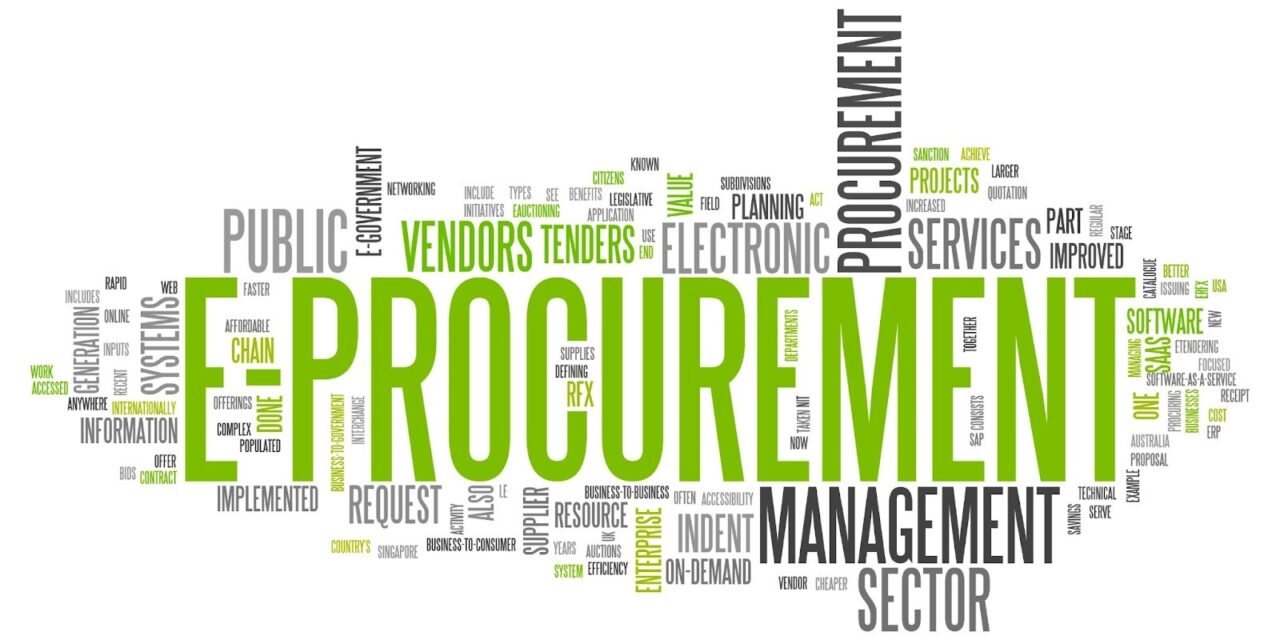1. Centralized Procurement Management:
E-procurement systems act as centralized platforms that consolidate all procurement-related activities into a unified system. This centralization enables organizations to have a holistic view of their procurement processes, making it easier to monitor and manage all transactions from a single point. This centralized approach enhances collaboration among various departments involved in the procurement cycle and facilitates better decision-making by providing real-time insights into procurement activities.
2. Electronic Requisitioning and Approval:
One of the fundamental functions of e-procurement systems is the automation of the requisitioning and approval process. Traditionally, paper-based requisitions were time-consuming and prone to errors. E-procurement systems allow employees to electronically submit requisitions, which can then be routed through an automated approval workflow. This not only accelerates the procurement process but also ensures compliance with organizational policies and budget constraints.
3. Supplier Management and Collaboration:
Efficient collaboration with suppliers is crucial for successful procurement. E-procurement systems facilitate seamless communication and collaboration between buyers and suppliers. These systems often include features for supplier onboarding, performance tracking, and evaluation. Through a centralized supplier database, organizations can maintain accurate records of supplier information, negotiate better terms, and establish long-term partnerships based on trust and transparency.
4. Catalog Management:
E-procurement systems typically include catalog management functionalities that enable organizations to create, organize, and update product and service catalogs. This ensures that employees have access to the latest information regarding available goods and services. Catalog management streamlines the procurement process by providing a standardized and easily searchable database, reducing the likelihood of errors in purchasing and improving overall efficiency.
5. Automated Procurement Workflows:
Automation is a key feature of e-procurement systems, and it extends to various aspects of the procurement process. Automated workflows can be configured to handle repetitive tasks, such as purchase order creation, invoice processing, and payment approvals. By automating these routine activities, organizations can significantly reduce the risk of errors, enhance accuracy, and free up valuable time for procurement professionals to focus on more strategic tasks.
6. Spend Analysis and Reporting:
E-procurement systems offer robust reporting and analytics tools that empower organizations to conduct spend analysis. By capturing and analyzing data related to procurement activities, organizations can gain valuable insights into spending patterns, identify cost-saving opportunities, and make informed decisions. Detailed reports generated by these systems provide visibility into the entire procurement lifecycle, allowing for continuous improvement and strategic decision-making.
7. Compliance Management:
Ensuring compliance with internal policies and external regulations is a critical aspect of procurement. E-procurement systems come equipped with features that help organizations enforce compliance by automating approval processes, flagging non-compliant activities, and maintaining an audit trail of all procurement transactions. This not only reduces the risk of legal and regulatory issues but also enhances the overall integrity of the procurement process.
8. Electronic Document Management:
The transition from paper-based documentation to electronic document management is a significant advantage offered by e-procurement systems. Storing and managing procurement-related documents electronically not only reduces the need for physical storage space but also makes it easier to retrieve and share documents securely. This digitization of documents contributes to a more environmentally friendly and efficient procurement process.
9. Integration with ERP Systems:
To maximize the effectiveness of e-procurement systems, integration with other enterprise systems, such as Enterprise Resource Planning (ERP) systems, is crucial. Seamless integration ensures data consistency across different departments and eliminates the need for manual data entry. This integration enhances the overall efficiency of business processes and provides a unified platform for managing various aspects of organizational operations.
10. Mobile Accessibility:
In an era where remote work and mobile accessibility are increasingly prevalent, e-procurement systems offer mobile applications that allow users to access procurement functionalities on the go. Whether it’s submitting requisitions, approving purchase orders, or checking the status of a procurement request, mobile accessibility adds a layer of flexibility that aligns with the dynamic nature of modern work environments.
11. Risk Management:
Effective risk management is a critical component of successful procurement, and e-procurement systems are designed to mitigate risks associated with supplier relationships, market fluctuations, and compliance issues. These systems often include features that assess and monitor supplier performance, evaluate potential risks, and implement contingency plans. By identifying and addressing risks proactively, organizations can safeguard their procurement processes and maintain a resilient supply chain.
12. Strategic Sourcing:
E-procurement systems enable organizations to implement strategic sourcing practices by providing tools for supplier discovery, negotiation, and contract management. These systems facilitate the creation of a competitive supplier environment, allowing organizations to select vendors based on factors such as quality, cost, and delivery capabilities. Strategic sourcing not only optimizes procurement costs but also fosters long-term partnerships that contribute to organizational success.
13. Real-Time Collaboration:
Modern business operations often require real-time collaboration, and e-procurement systems rise to the occasion by providing collaboration tools that enhance communication among stakeholders. Whether it’s negotiating terms with suppliers, discussing requisition details, or resolving procurement issues, real-time collaboration features promote efficiency and agility in decision-making, particularly in a globalized business environment.
14. Electronic Invoicing and Payments:
Automation extends to the financial aspects of procurement with features such as electronic invoicing and payments. E-procurement systems streamline the invoicing process by automating the generation, submission, and approval of invoices. Additionally, integration with payment systems enables organizations to process payments electronically, reducing the reliance on manual, paper-based transactions. This not only accelerates the payment cycle but also minimizes the risk of errors and late payments.
15. Continuous Improvement and Feedback Mechanisms:
E-procurement systems support a culture of continuous improvement by providing mechanisms for feedback and performance evaluation. These systems often include features for collecting feedback from users, suppliers, and other stakeholders. Analyzing this feedback allows organizations to identify areas for improvement, implement corrective measures, and refine their procurement processes over time, fostering a culture of continuous learning and optimization.
16. Environmental and Social Responsibility:
In today’s business landscape, environmental and social responsibility have become integral aspects of organizational values. E-procurement systems contribute to sustainability initiatives by providing tools to track and manage the environmental and social impact of procurement activities. This includes monitoring supplier sustainability practices, assessing the carbon footprint of the supply chain, and making informed decisions that align with corporate social responsibility goals.
17. User Training and Support:
The successful implementation of e-procurement systems requires a workforce that is well-versed in utilizing the platform. To support users, these systems often include training modules and user support features. Training programs ensure that employees understand the functionalities of the system, reducing the learning curve and increasing overall adoption. Additionally, responsive user support mechanisms address queries and issues promptly, ensuring a smooth user experience and minimizing disruptions in procurement activities.
18. Customization and Scalability:
Every organization has unique procurement requirements, and e-procurement systems recognize this diversity by offering customization options. Organizations can configure the system to align with their specific processes, preferences, and industry regulations. Moreover, these systems are designed to be scalable, accommodating the evolving needs of growing businesses. Whether an organization is a small startup or a multinational corporation, e-procurement systems can adapt to the scale and complexity of procurement operations.
19. Artificial Intelligence and Predictive Analytics:
As technology advances, e-procurement systems are increasingly incorporating artificial intelligence (AI) and predictive analytics. AI can analyze historical data to identify patterns, optimize procurement decisions, and enhance forecasting accuracy. Predictive analytics, coupled with machine learning algorithms, can provide insights into market trends, supplier performance, and potential risks, empowering organizations to make data-driven decisions and stay ahead in a competitive landscape.
20. Cybersecurity Measures:
Given the increasing frequency of cyber threats, cybersecurity measures are paramount in e-procurement systems. These systems implement robust security protocols to protect sensitive procurement data, including supplier information, financial transactions, and confidential contracts. Encryption, authentication mechanisms, and regular security updates are integral components that safeguard the integrity and confidentiality of procurement-related information.
In conclusion, the functions of e-procurement systems extend beyond the basic automation of procurement processes. These systems serve as comprehensive platforms that address various aspects of procurement, from requisition to payment, while also embracing emerging technologies and promoting sustainability. By leveraging the full spectrum of functionalities offered by e-procurement systems, organizations can not only optimize their procurement processes but also position themselves for success in an increasingly digital and competitive business landscape.
The continued evolution of e-procurement systems will likely bring even more advanced features, further revolutionizing how organizations approach and execute their procurement strategies. As businesses navigate the complexities of the global marketplace, the adoption of e-procurement systems stands as a strategic imperative for those aiming to achieve operational excellence and sustained success.
Conclusion: Embracing a Digital Future in Procurement
In the rapidly evolving landscape of business operations, the adoption of e-procurement systems emerges not only as a technological upgrade but as a strategic imperative for organizations striving to achieve operational excellence and sustained success. The multifaceted functions of these systems, ranging from centralized procurement management to artificial intelligence-driven analytics, collectively redefine how businesses approach and execute their procurement strategies.
As we navigate the intricate terrain of modern commerce, the holistic approach offered by e-procurement systems becomes increasingly apparent. These systems serve as dynamic hubs where efficiency, transparency, and collaboration converge to reshape the traditional procurement paradigm. The centralized nature of e-procurement platforms acts as a unifying force, breaking down silos within organizations and fostering collaboration among various stakeholders involved in the procurement lifecycle.
Automation, a cornerstone of e-procurement, not only accelerates mundane tasks but fundamentally transforms the nature of work within procurement departments. By automating requisitioning, approval workflows, and invoicing processes, organizations liberate valuable time and resources, allowing procurement professionals to redirect their focus towards strategic activities such as supplier relationship management, strategic sourcing, and risk mitigation.
Moreover, the integration of e-procurement systems with Enterprise Resource Planning (ERP) systems signifies a shift towards seamless data flow and consistency across different facets of organizational operations. This integration eliminates data silos, reducing the likelihood of errors and enhancing the overall accuracy of business processes. The resulting synergy between procurement and other business functions contributes to a more agile and responsive organizational structure.
The role of e-procurement systems extends beyond mere transactional efficiency. These systems serve as catalysts for cultural and organizational transformation. By promoting a culture of continuous improvement through feedback mechanisms and training programs, organizations ensure that their workforce remains adaptable and responsive to evolving procurement landscapes.
Sustainability, a growing concern for businesses worldwide, is not overlooked by e-procurement systems. The integration of tools to monitor environmental and social impact aligns procurement practices with corporate social responsibility goals. This dual focus on efficiency and sustainability positions e-procurement as a key player in fostering responsible and ethical business practices.
Looking forward, the evolution of e-procurement systems is anticipated to be marked by the integration of advanced technologies such as artificial intelligence and predictive analytics. These technologies promise to elevate procurement processes to new heights by providing predictive insights, optimizing decision-making, and enhancing overall efficiency. As the digital transformation journey unfolds, organizations must stay attuned to these advancements to harness their full potential.
In the realm of cybersecurity, e-procurement systems stand as bastions against the rising tide of cyber threats. With robust security measures in place, these systems safeguard critical procurement data, ensuring the confidentiality and integrity of sensitive information. As the digital landscape continues to present new challenges, the emphasis on cybersecurity will remain paramount in securing the foundations of e-procurement.
In conclusion, the functions of e-procurement systems extend far beyond the digitization of procurement processes; they represent a paradigm shift in how organizations approach efficiency, collaboration, and sustainability.
The journey toward a digital future in procurement is not merely a technological adaptation but a strategic choice to embrace innovation, agility, and resilience in the face of an ever-evolving business landscape. As organizations chart their course forward, the integration and optimization of e-procurement systems will continue to be a cornerstone of success in the dynamic and competitive world of modern commerce.












